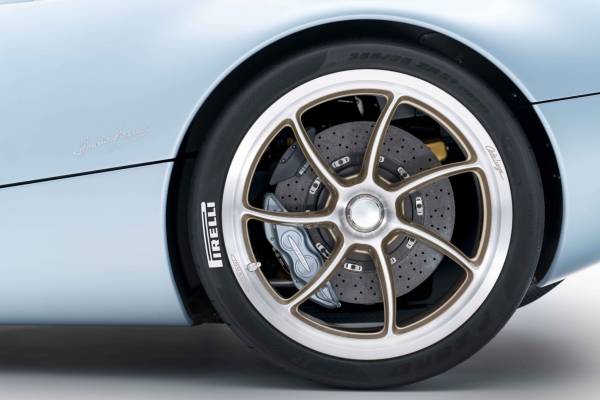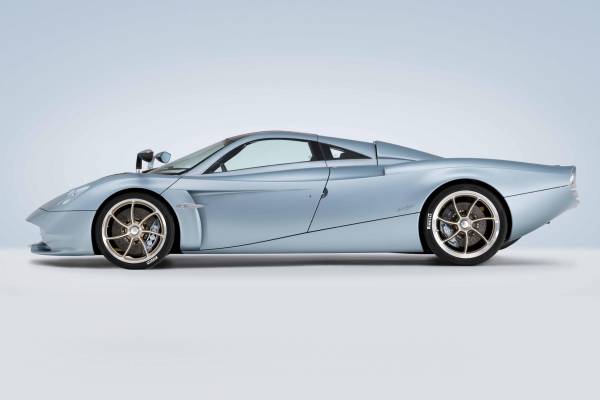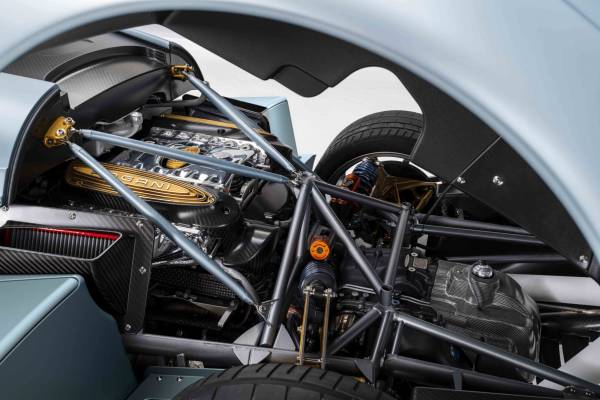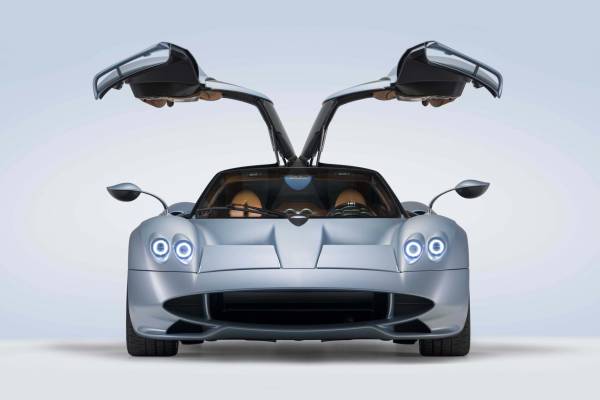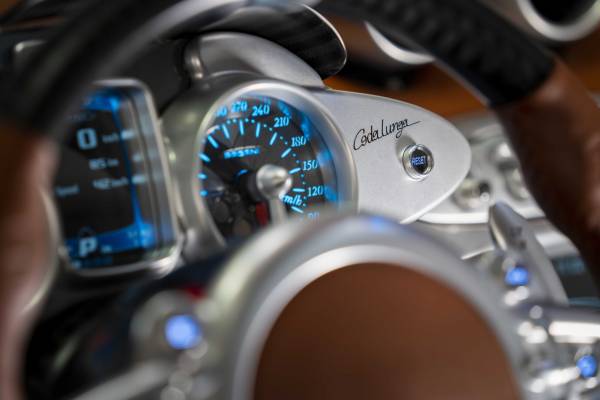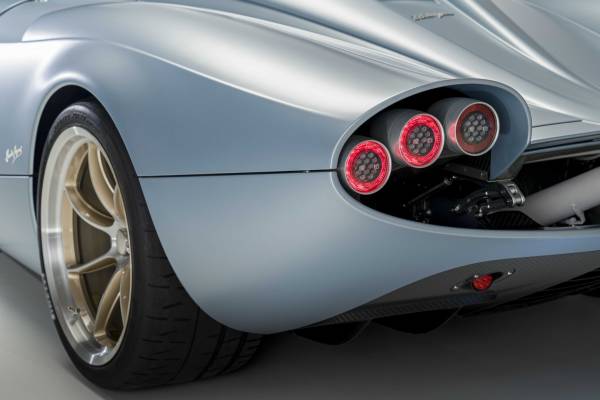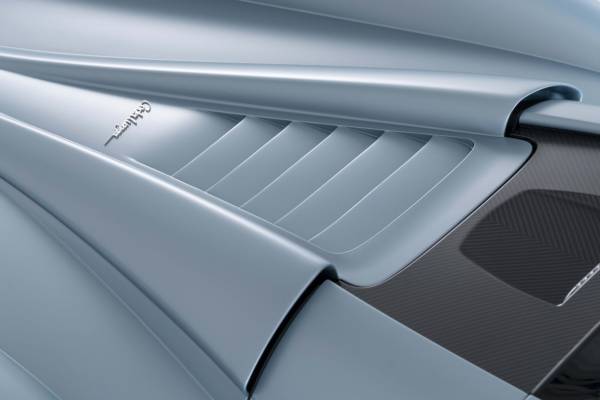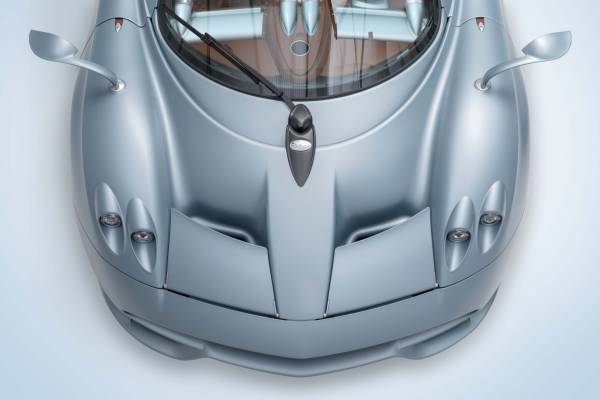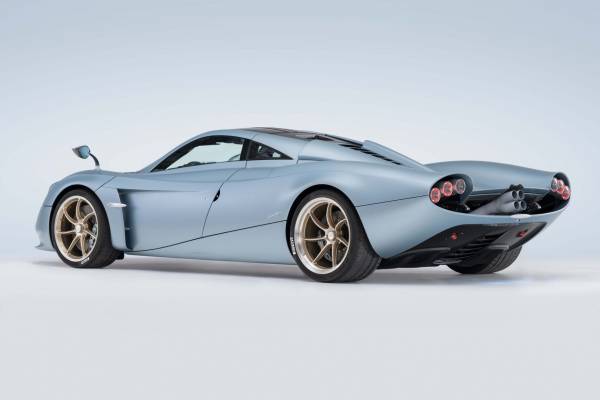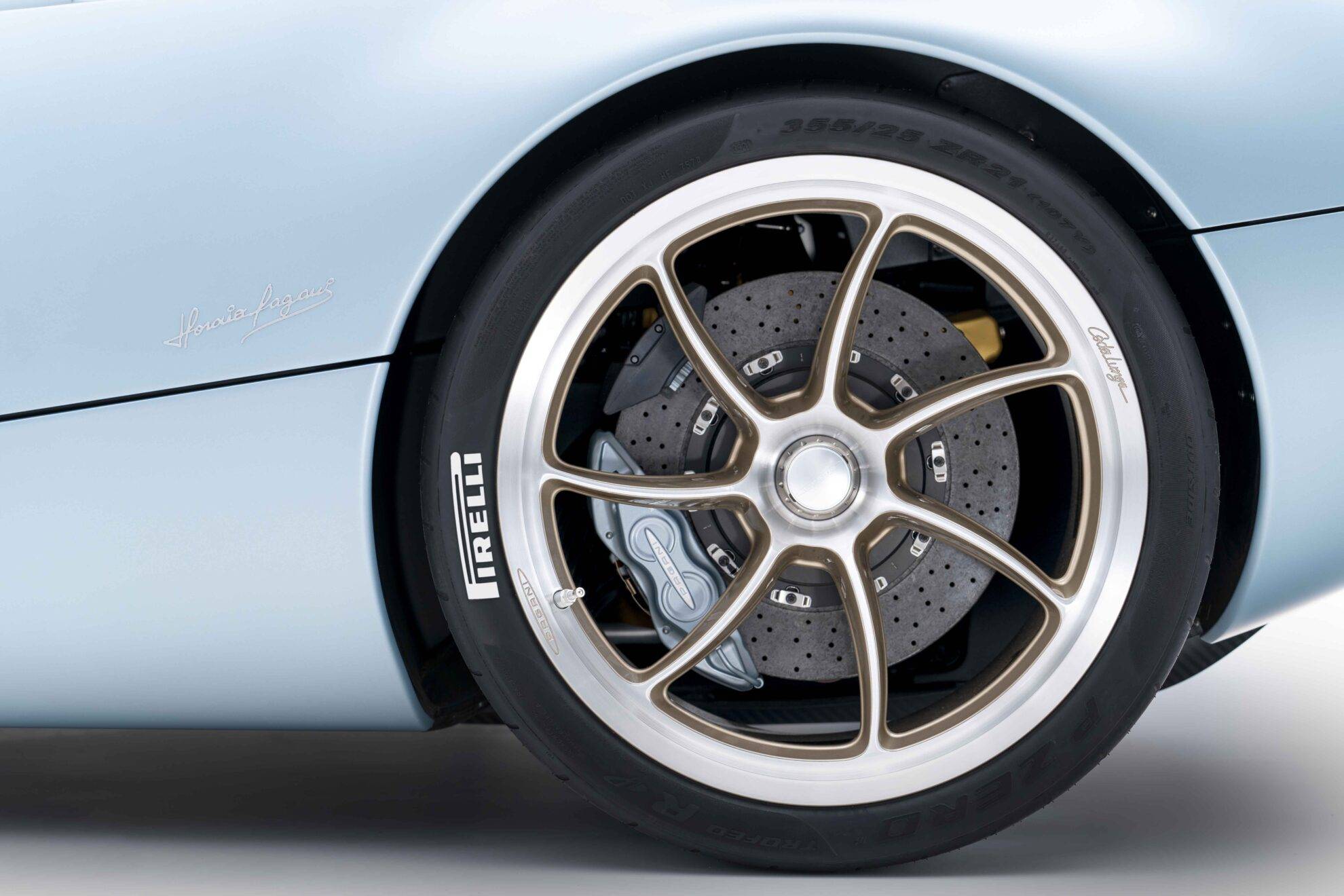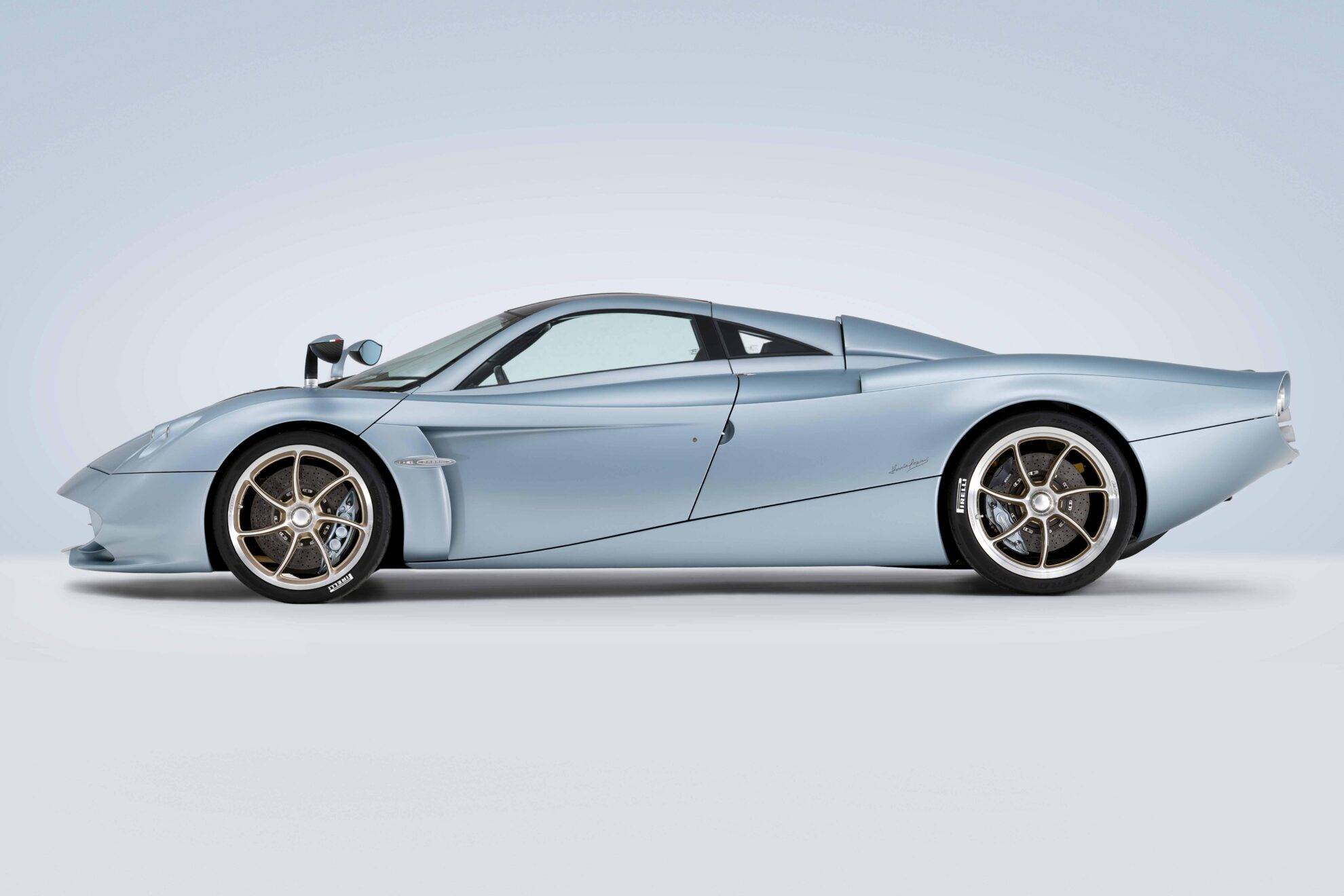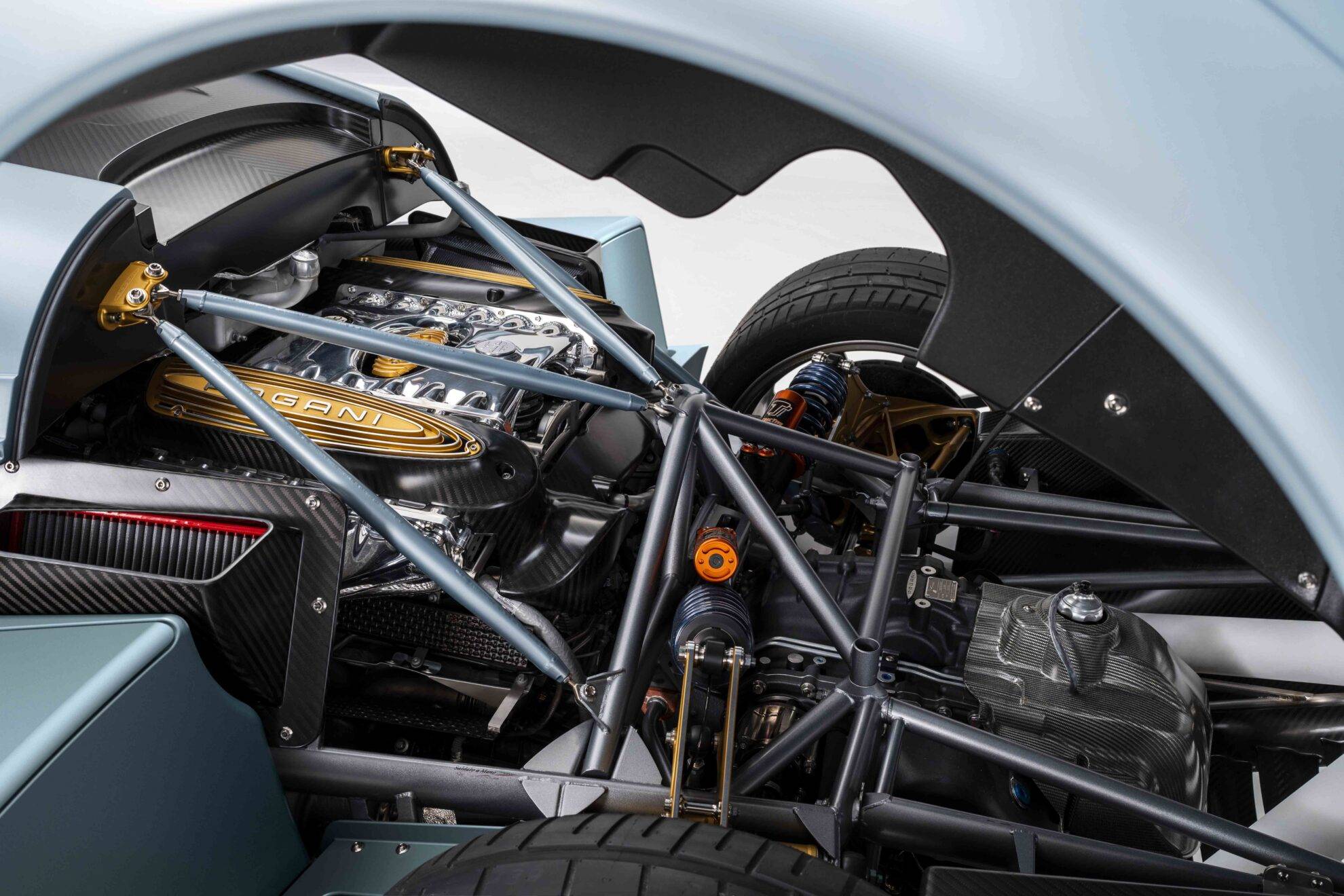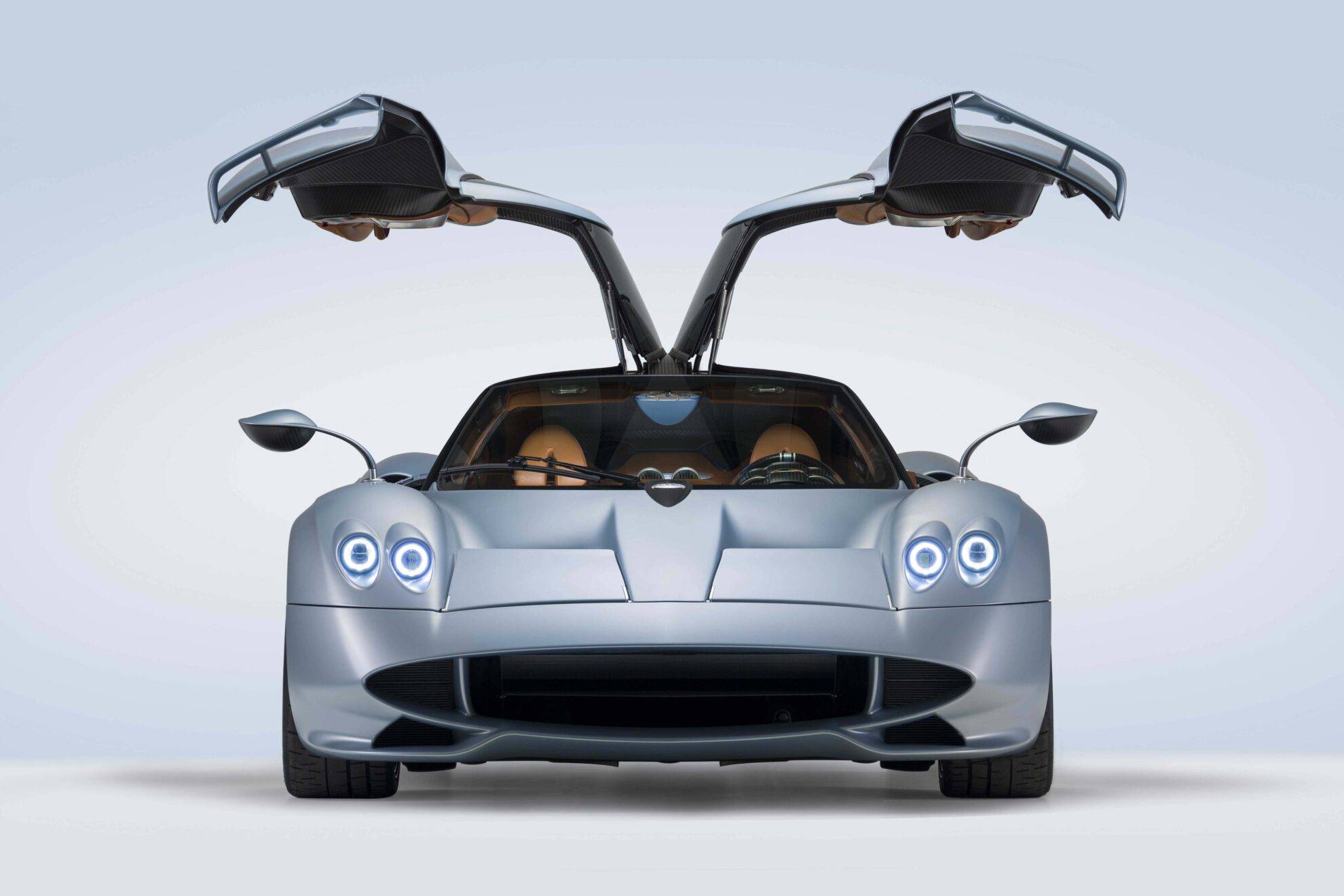
Description
Specifications
Downloads
Description
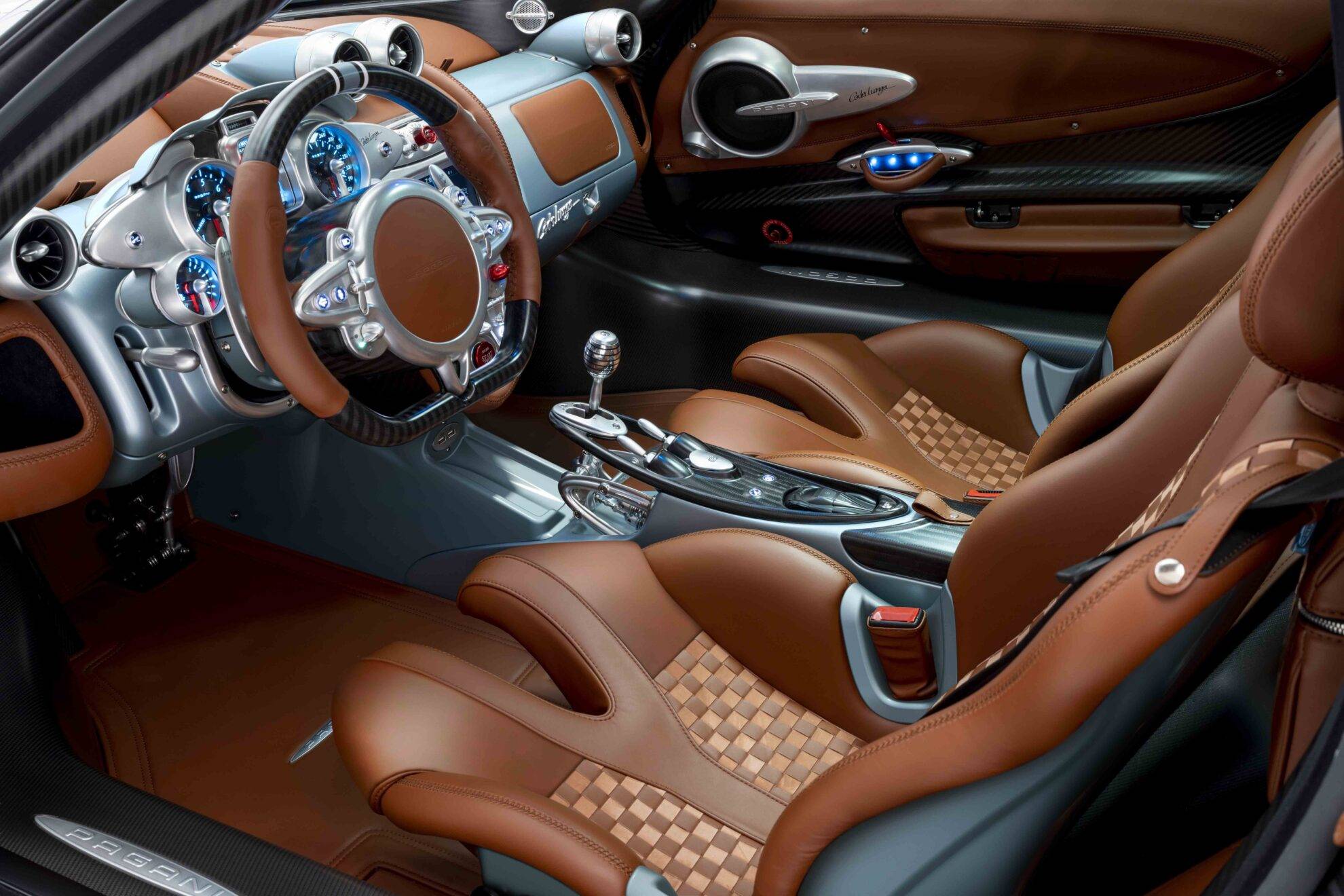
- A tribute to the timeless shapes of the Italian coachbuilders and racecars of the ‘60s, presenting clean lines and sinuous, elegant shapes
- A project born from the joint vision of client and designer
- Limited production of just five tailor-made examples, all sold-out, with prices starting from € 7 million
- Created by the dedicated division for special projects: Pagani Grandi Complicazioni.
The coachbuilders of the ‘60s were inspired by aircraft designs and, in a relentless quest for speed and low drag, created some of the most iconic shapes in the automotive history. At the time, large body panels created by hand in aluminum alloy were the result. Today, Pagani uses its know-how in advanced composite materials to create a bodywork that follows this inspiration.
The rear engine cover, which has a footprint of more than 3.7 m 2 , and is 360 mm longer than the one of the Huayra Coupé, conceals a mechanical prodigy: the Pagani V12, which, on this series, is capable of developing 840 HP with 1,100 Nm of torque.
The lack of rear grilles makes space for an unobstructed view of the Codalunga’s exhaust system, which is made from titanium and weighs only 4.4 kg (9.7 lb). The special ceramic coating completes the homage to the racing cars of Le Mans and the symphony that emanates from the signature four tailpipes is a tribute to automotive passion.
The work “to take away rather than add” resulted in a record weight of just 1,280 kg (2,822 lb) and extremely high aerodynamic efficiency, helped by the car’s shape and extra length. The four flaps with variable profiles represent the very latest in active aerodynamics, a feature which had its world preview in 2011 and which has been subsequently refined with each model.
On this special model, the choice was made to use neutral colors and semi-matte or fully matte paints, to evoke the shades of the past and to bring out the simplicity of the car’s design. This concept also plays a fundamental role on the inside, where the seats are finished with a woven leather/nubuck upholstery and aluminum components are machined from a single block. This recalls the manual techniques of the past, when the artisan would polish each element by hand. Work which is still performed today, a tradition kept alive by the experts in the center of the world sports car industry, Italy’s Motor Valley.
Specifications
| Engine | Pagani V12 60° 36 valves 5,980 CC, twin turbo |
| Max. Power | 840 CV (618 kW) at 5,900 rpm |
| Max. Torque | 1,100 Nm from 2,000 rpm to 5,600 rpm |
| Gearbox | Pagani by Xtrac, transverse mounted 7-speed sequentia |
| Brakes | Pagani by Brembo carbon-ceramic self-ventilated disc brakes: diameter 410 x 38 mm with 6-piston one-piece calliper at the front; diameter 390 x 34 mm with 4-piston one-piece calliper at the rear |
| Wheels | One-piece APP Tech in forged Avional, 20” at the front and 21” at the rear |
| Tyres | Pirelli PZero Corsa 265/30 R20 at the front and 355/25 R21 at the rear; Pirelli SottoZero for driving in low temperatures |
| Suspension | Active forged aluminium alloy, independent double wishbone with variable-pitch helical springs and coaxial dampers |
| Structure | Carbon-Titanium HP62 G2 and Carbon-Triax HP62 monocoque |
Downloads
